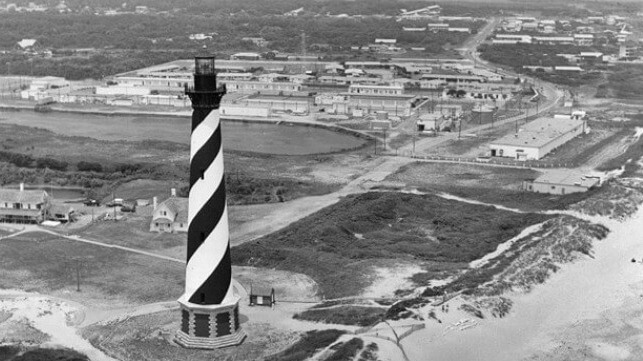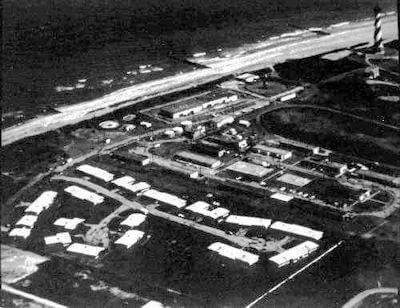Hurricanes Unearth Evidence of Secret Cold War Surveillance Base

Erosion caused by wave action from Hurricane Franklin and Hurricane Idalia has unearthed a relic of the Cold War at Cape Hatteras: the contaminated remnants of a U.S. Navy base, which was once used to track Soviet submarines in the deep.
Cape Hatteras was home to one of the first listening stations in the highly-classified Project Caesar (SOSUS) program. In the 1950s, the U.S. Navy's Office of Naval Research collaborated with some of the brightest minds in physical oceanography to explore the potential of the deep sound channel - a layer in the deep that can transmit sound over very long ranges. Russian diesel-electric subs of the day were noisy, and subsea hydrophones deployed in this layer could detect them from hundreds of miles away. Hydrophone arrays were deployed up and down the eastern seaboard, and the signals from each hydrophone array were transmitted back to one of a dozen shoreside receiving stations, where a staff of trained technicians would use analog equipment to manually analyze the results. The program gradually wound down as technology and priorities changed in the 1980s-90s.

The Cape Hatteras SOSUS station, foreground, with Cape Hatteras light in background (USN)
The spacious Cape Hatteras base had room for 300 personnel and dependents, and it was located just north of the original Cape Hatteras lighthouse site. It was taken over by the U.S. Coast Guard after the Navy vacated it in the 1980s. The Coast Guard later departed as well, demolishing the remaining buildings when it went.
As at many Cold War-era military bases, the Navy garrison left behind the chemical residues of the era. According to the North Carolina Coastal Federation, soil sampling at the 40-acre site in 2013 picked up first-generation pesticides like endrin, dieldrin and chlordane, all of which now banned because of their toxicity.
 Exposed infrastructure at the former SOSUS base site (Cape Hatteras National Seashore)
Exposed infrastructure at the former SOSUS base site (Cape Hatteras National Seashore)

that matters most
Get the latest maritime news delivered to your inbox daily.
After the recent storm, Cape Hatteras National Seashore closed a stretch of beach near the Buxton jetties after "substantial post-storm beach erosion was observed and reports of a strong smell of fuel were received from visitors." According to the park staff, the erosion exposed "potentially hazardous infrastructure" from a former military site at the end of Old Lighthouse Road (the former SOSUS base).
The area is popular with surfers and beachgoers, but the park has asked visitors to steer clear of the closed section of beach until it can be fully assessed and reopened.
